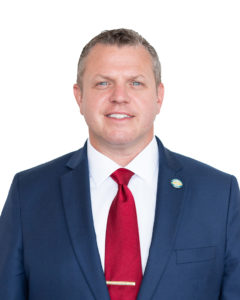
Commissioner Jason E. Glass
Public education is a decidedly social endeavor. The things most graduates treasure from their school years are the memories of interactions with great teachers who changed the trajectory of their life, their experiences in school activities and athletics that taught them the value of collaboration and teamwork, and the lifelong bonds of friendship that often are forged in school-age years.
This same social and communal nature of education is what made it so vulnerable to a virus like COVID-19, which is transmitted from one person to another through respiratory droplets.
While not without struggle, Kentucky’s public education system stands out as a model in COVID-19 management. Following the guidance put forth by the Kentucky Department of Education and the Department for Public Health, school districts in the Commonwealth planned for and then executed layers of virus mitigation strategies designed to offer relatively safe in-person instruction options for students, while also redesigning curricula and lessons to offer quality remote learning.
And so far, those in-person mitigation strategies seem to be working. Now, with hundreds of thousands of Kentucky students learning in-person daily, we have not seen widespread evidence of school-based transmissions or of schools being vectors of viral spread.
Disappointingly, the same cannot be said for transmissions occurring in our communities. With COVID-19 numbers rising to record levels in Kentucky, we appear to be entering a new phase in this pandemic and possibly an exponential growth curve in viral transmissions.
An increase in the spread of COVID-19 in our communities has an impact on the operation of our schools in two important ways.
First, the increased presence of the virus in our communities puts even more pressure on a school’s viral defenses in keeping COVID-19 out or contained. The more of the virus there is in a community, the greater the threat to keeping public schools open to in-person learning. A few of our school districts – including our two largest in Fayette and Jefferson counties – have yet to reopen to in-person classes since March 16 because of the virus levels in those communities.
Second, when community transmission rates are high, the operations of schools are disrupted by quarantining procedures put in place through contact tracing. When people get sick in communities, they come in contact with students, teachers, administrators, bus drivers and other school support staff. And when school districts end up quarantining whole classes and key instructional or school support personnel to keep the virus contained, it makes normal school operations impossible.
We need our communities to take this virus as seriously as our schools have. While many may contract COVID-19 through no fault of their own, the selfish and haphazard approach some in our communities have taken to this virus risks is effectively denying our children opportunities to learn. This is shameful.
With good news about possible vaccines on the horizon, we have cause for optimism that there will be a time when this virus does not rule so much of our lives. But we should not confuse this with being out of this crisis. Even if an effective vaccine becomes available, it may still be some time before life as we knew it before COVID returns.
During this time, our children need to be in school. They need to be able to see their teachers, access all the supports our public schools provide, and to be able to play and grow together.
We must put the interests of Kentucky’s children ahead of our own.


Leave A Comment